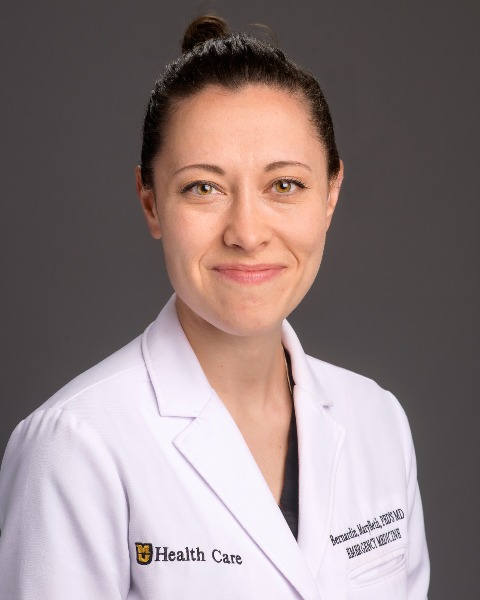Health Equity/Social Determinants of Health
Health Equity/Social Determinants of Health 9
582 - Environmental Racism: Associations Between Poverty, Pollution, and Pediatric Gun Violence
Publication Number: 582.413

Amelia Bray-Aschenbrenner, MD (she/her/hers)
Assistant Professor
Washington University in St. Louis School of Medicine
St. Louis, Missouri, United States
Mary E. Bernardin, MD (she/her/hers)
Assistant Professor of Pediatric Emergency Medicine
University of Missouri-Columbia School of Medicine
Columbia, Missouri, United States
Presenting Author(s)
Co-Author(s)
Background:
“Environmental racism” describes the “disproportionate impact of environmental hazards on people of color.”1 The St. Louis EcoUrban Assessment Tool, an interactive online tool, was created to help visualize locations throughout St. Louis, MO that are impacted by such hazards.2 Pediatric firearm injuries have become the leading cause of death amongst American children,3 but the locations of such injuries have not been studied in relation to other environmental hazards disproportionately impacting the lives and health of disparaged communities.
Objective: To utilize the St. Louis EcoUrban Assessment Tool and US Census Tract Data to evaluate for associations between areas of the highest air pollution, poverty rates and frequency of pediatric firearm injuries in St. Louis, MO.
Design/Methods:
This retrospective cohort study included pediatric patients age 0-18 years presenting to St. Louis Children’s Hospital Emergency Department with firearm injuries from 2014-2017. The zip codes where firearm injuries occurred were obtained via chart review. Groups of city blocks most vulnerable to air pollution [“vulnerable block groups” (VBGs)] based on multiple environmental factors2 were obtained from the St. Louis EcoUrban Assessment Tool. Sociodemographic information for firearm incident zip codes was obtained from US Census Tract Data.4 Spearman’s correlation coefficient was calculated to assess the correlation between the number of pediatric firearm injuries and VBGs per zip code. Two-sample T test and Fischer’s Exact Test were used to compare sociodemographic data of the 5 zip codes with the highest number of firearm injuries to the 28 other zip codes where firearm injuries occurred.
Results:
Incident zip codes were obtained for 153 pediatric victims of firearm injury. Shootings occurred across 33 zip codes, with over 50% occurring in 5 zip codes. These 5 zip codes had significantly higher percentage of occupants living below poverty level (27% vs 15%, p=0.05), higher Black occupants (90% vs 42%, p=0.01), lower White occupants (6.5% vs 50%, p=0.01), fewer married households (32% vs 56%, p=0.01) and more female-headed households (56% vs 34%, p=0.01). A significant positive correlation [CC 0.80 (95%CI 0.70-0.87)] was found between the number of firearm injuries and the amount of air pollution VBGs per zip code.
Conclusion(s):
Children living in urban areas with the highest levels of poverty and air pollution are also at significantly increased risk of firearm injuries. Further research is needed to better understand the intersectionality of environmental hazards, poverty, and other social determinants of health..png)
.png)
